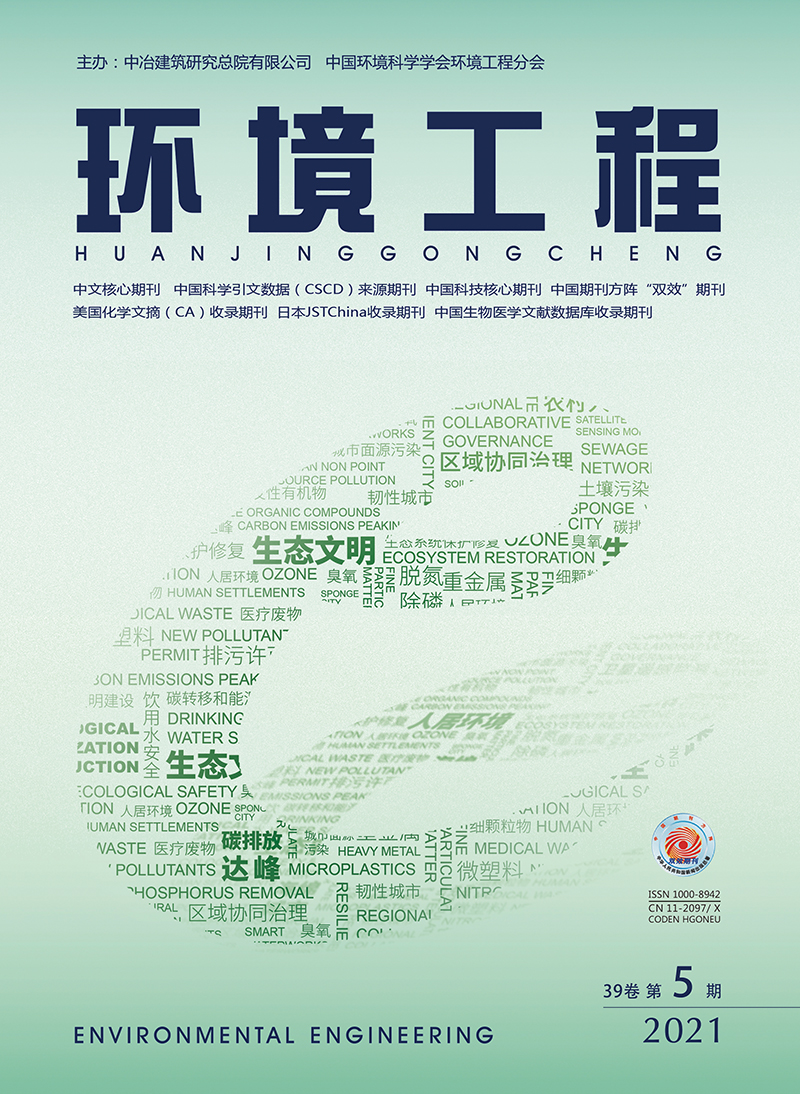| [1] |
郭广慧,陈同斌,杨军,等.中国城市污泥重金属区域分布特征及变化趋势[J]. 环境科学学报, 2014,34(10):2455-2461.
|
| [2] |
GU T Y, RASTEGER S O, MOUSAVI S M, et al. Advances in bioleaching for recovery of metals and bioremediation of fuel ash and sewage sludge[J]. Bioresource Technology, 2018,261:428-440.
|
| [3] |
MEHROTRA A, SREEKRISHNAN T R. Heavy metal bioleaching and sludgestabilization in a single-stage reactor using indigenous acidophilic heterotrophs[J]. Environmental Technology, 2017,38(21):1-16.
|
| [4] |
DENG X H, CHAI L Y, YANG Z H, et al. Bioleaching mechanism of heavymetals in the mixture of contaminated soil and slag by using indigenous Penicillium chrysogenum strain F1[J]. Journal of Hazardous Materials, 2013,248/249(15):107-114.
|
| [5] |
甘莉,刘贺琴,王清萍,等.氧化亚铁硫杆菌生物浸出污泥中的重金属离子[J]. 中国环境科学, 2014,34(10):2617-2623.
|
| [6] |
向少云,田永静,夏晶,等.生物沥滤法对剩余污泥中重金属及养分含量的影响[J].中国给水排水,2018,34(1):20-25.
|
| [7] |
ELISABETH NEYENS, JAN BAEYENS, RAF Dewil, et al. Ad-vanced sludge treatment affects extracellular polymericsubstances to improve activated sludge dewatering[J].Journal of Hazardous Materials, 2004, 106B:83-92.
|
| [8] |
HUO M B, ZHENG G Y, ZHOU L X. Enhancement of the dewaterability of sludge during bioleaching mainly controlled by microbial quantity change and the decrease of slime extracellular polymeric substances content[J]. Bioresource Technology, 2014,168:190-197.
|
| [9] |
DAI Q X, MA L P, REN N Q, et al. Investigation on extracellular polymeric substances, sludge flocs morphology, bound water release and dewatering performance of sewage sludge under pretreatment with modified phosphogypsum[J]. Water Research, 2018,142:337-346.
|
| [10] |
周俊,周立祥,黄焕忠,等.污泥胞外聚合物的提取方法及其对污泥脱水性能的影响[J]. 环境科学, 2013,34(7):2752-2757.
|
| [11] |
ZHEN G Y, LU X Q, LI Y Y, et al. Innovative combination of electrolysis and Fe(Ⅱ)-activatedpersulfate oxidation for improving the dewaterability of waste activated sludge[J]. Bioresource Technology, 2013, 136:654-663.
|
| [12] |
WANG X M, WANG X, YANG M H, et al. Sludge conditioning performance of polyaluminum, polyferric, and titanium xerogel coagulants[J]. Environmental Science, 2018,39(5):2274-2282.
|
| [13] |
夏晶,田永静,王骁,等.生物淋滤中硫粉对污泥EPS组分和脱水性的影响[J].中国环境科学,2019,39(2):619-624.
|
| [14] |
WINGENDER J, NEU T R, FLEMMING H C. Microbial extracellular polymeric substances, characterization, structure and function[M]. Springer Berlin Heidelberg, 1999,88(1):45-53.
|
| [15] |
王红武,李晓岩,赵庆祥.活性污泥的表面特性与其沉降脱水性能的关系[J]. 清华大学学报(自然科学版), 2004,44(6):766-769.
|
| [16] |
华玉妹,陈英旭,张少辉.污泥生物沥滤中硫细菌变化和胞外多聚物作用的研究[J]. 中国环境科学, 2011,31(5):795-802.
|
| [17] |
周立祥. 污泥生物沥浸处理技术及其工程应用[J]. 南京农业大学学报, 2012,35(5):154-166.
|
| [18] |
刘昌庚.基于生物淋滤的城市污泥调理技术[D]. 长沙:湖南大学,2010.
|
| [19] |
LOWRY O H, ROSEBROUGH N J, FARR A L, et al. Protein measurement with the Folin phenol reagent[J]. Journal of Biological Chemistry, 1951,193(1):265-275.
|
| [20] |
GAUDY A F. Colorimetric determination of protein and carbohydrate[J]. Industrial Water Wastes, 1962,7(1):17-22.
|
| [21] |
李金印. 胞外聚合物及其表面性质对活性污泥絮凝沉降性能的影响研究[D].重庆:重庆大学, 2008.
|
| [22] |
黄晓婷, 袁海平, 周熠鸣, 等. 基质投加量对生物调理改善污泥脱水性能的影响[J]. 环境科学学报, 2017,37(6):2137-2142.
|
| [23] |
CHEN Y G, YANG H Z, GU G W. Effect of acid and surfactant treatment on activated sludge dewatering and settling[J]. Water Research, 2001,35(11):2615-2620.
|
| [24] |
ZITA A,HERMANSSON M. Effects ofbacterial cell surface sllalctule and hydrophobicity on attachment to activated sludge flocs[J]. Applical and Environmental Microbiology,1997,63(3):1168-1170.
|
| [25] |
LIAO B Q, ALLEN D G, LEPPARD G G, et al. Interparticle interac-tion affecting the stability of sludge flocs[J].Journal of Colloid and Interface Science, 2002, 249:372-380.
|
| [26] |
DIGNAC M F, URBAIN V, RYBACKI D, et al. Chemical description of extracellular polymers:implication on activated sludge floc structure[J]. Water Science and Techology, 1998,38(8/9):45-53.
|


 Login
Login Register
Register E-alert
E-alert






 DownLoad:
DownLoad: